Lily Farm |
|||||||||||||||||||||||||||||||||||||||||||||||||||||||||||||||||||||||||||||||||||||
| Scroll down to find out more Click on Charmouth Home to return back. |
|||||||||||||||||||||||||||||||||||||||||||||||||||||||||||||||||||||||||||||||||||||
In the nineteenth century the following advertisement appeared in Lyrne. |
|||||||||||||||||||||||||||||||||||||||||||||||||||||||||||||||||||||||||||||||||||||
 |
|||||||||||||||||||||||||||||||||||||||||||||||||||||||||||||||||||||||||||||||||||||
| Edward Copleston (2 February 1776 – 14 August 1849) was an English churchman and academic, Provost of Oriel College, Oxford from 1814 til 1828 and Bishop of Llandaff from 1827. | |||||||||||||||||||||||||||||||||||||||||||||||||||||||||||||||||||||||||||||||||||||
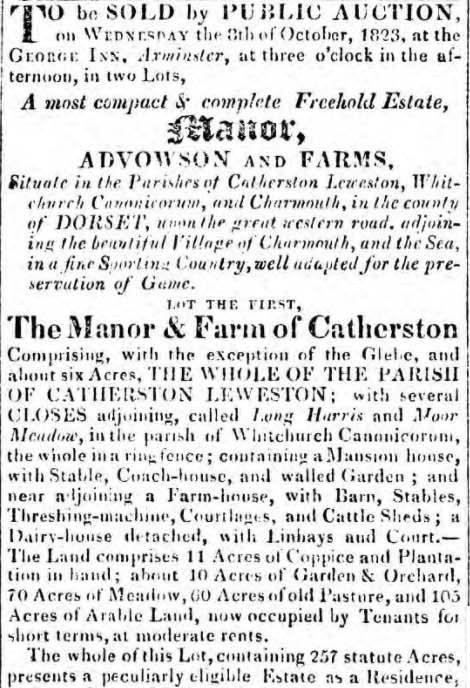 |
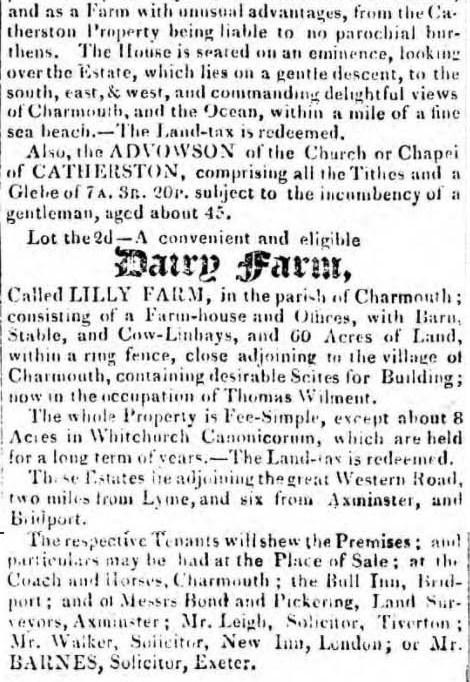 |
||||||||||||||||||||||||||||||||||||||||||||||||||||||||||||||||||||||||||||||||||||
1823 "A very desirable Farm, called Lily, situate close to the high road, consisting of Farm house, and out buildings and about 60 acres of good meadows, pasture and arable land, now and for many years past in the occupation of Mr. Thomas Willment. Lily Farm is admirably situated for building Villa Residences, having a S.E. aspect and abutting upon the high road from London to Exeter." |
|||||||||||||||||||||||||||||||||||||||||||||||||||||||||||||||||||||||||||||||||||||
| The Rt Revd Edward, Bishop of Llandaff 2 Thomas Willmont of Charmouth, yeoman 3 John Honeywood Townsend of Honiton, Devon, gent 1 to 2 Property: part of a meadow called Lilley Meadow or Grange Mead (33p), parcel of Lilley Farm, Charmouth Consideration: 201, 2 Dec 1834D-1344/2/1 | |||||||||||||||||||||||||||||||||||||||||||||||||||||||||||||||||||||||||||||||||||||
Edward Coppleston (1776-1849) was Bishop of LLandaff and bought it from William Drewe in 1824. He leased it to Thomas Willment from 1834.In 1836 He gave £10 towards rebuilding Church in Charmouth. |
|||||||||||||||||||||||||||||||||||||||||||||||||||||||||||||||||||||||||||||||||||||
 |
|||||||||||||||||||||||||||||||||||||||||||||||||||||||||||||||||||||||||||||||||||||
 |
|||||||||||||||||||||||||||||||||||||||||||||||||||||||||||||||||||||||||||||||||||||
1884 |
|||||||||||||||||||||||||||||||||||||||||||||||||||||||||||||||||||||||||||||||||||||
| SURVEY OF THE MANOR OF CHARMOUTH : made October 1564 Thomas Bassall alias Best holds by copy dated 23 Apr 1526, 29 acres out of the lord’s demesnes; viz; 3 closes of pasture called Lylleyes (23 a), Lylleyesmead (3 a), & Groveland (3 a); also Commons of pasture for 15 sheep in Rodehorne Common; to hold for life; fine 40s, rent 53s 4d. The reversion of the premises granted to William Bassall alias Best, for life by copy dated 15 Sep 1550. The same Thomas Bassall alias Best holds by copy dated 8 May 1538, a cottage with curtilage or orchard, (1 a) for the lives of himself, Thomasine, his wife (dead) and George his son (dead); fine 40s, rent 2s 9d. Reversion granted to William Bassall alias Best and Margaret Rawe, - Jul 1570 |
|||||||||||||||||||||||||||||||||||||||||||||||||||||||||||||||||||||||||||||||||||||
SURVEY OF THE MANOR OF CHARMOUTH : 1783 |
|||||||||||||||||||||||||||||||||||||||||||||||||||||||||||||||||||||||||||||||||||||
|
|||||||||||||||||||||||||||||||||||||||||||||||||||||||||||||||||||||||||||||||||||||
Lily Farm in 1841 when it was owned by Rev. Edward Copleston, Bishop of LLandaff and rented by Thomas Willment |
|||||||||||||||||||||||||||||||||||||||||||||||||||||||||||||||||||||||||||||||||||||
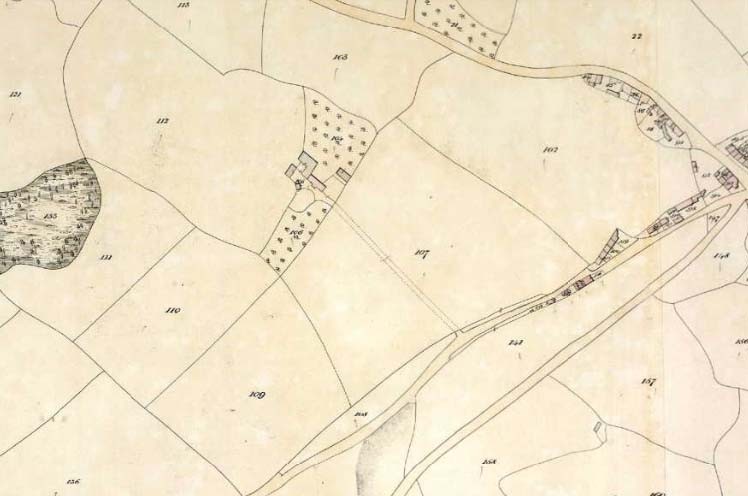 |
|||||||||||||||||||||||||||||||||||||||||||||||||||||||||||||||||||||||||||||||||||||
 |
|||||||||||||||||||||||||||||||||||||||||||||||||||||||||||||||||||||||||||||||||||||
1841 Tithe Map |
|||||||||||||||||||||||||||||||||||||||||||||||||||||||||||||||||||||||||||||||||||||
 |
|||||||||||||||||||||||||||||||||||||||||||||||||||||||||||||||||||||||||||||||||||||
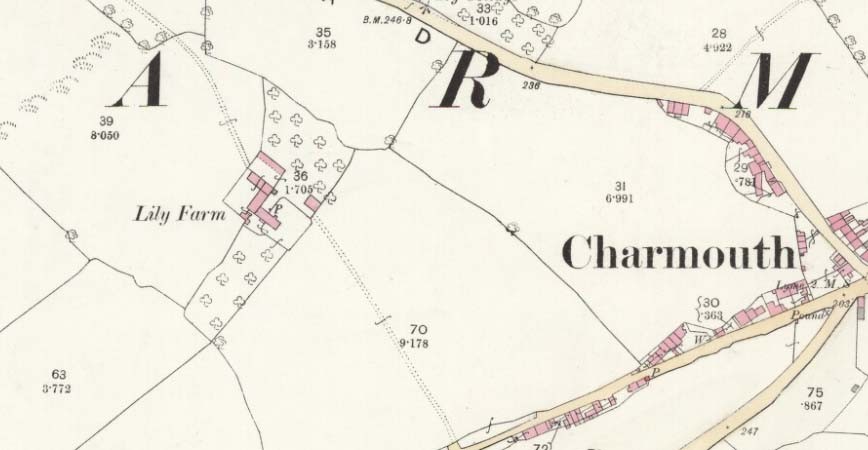 |
|||||||||||||||||||||||||||||||||||||||||||||||||||||||||||||||||||||||||||||||||||||
1887 Map |
|||||||||||||||||||||||||||||||||||||||||||||||||||||||||||||||||||||||||||||||||||||
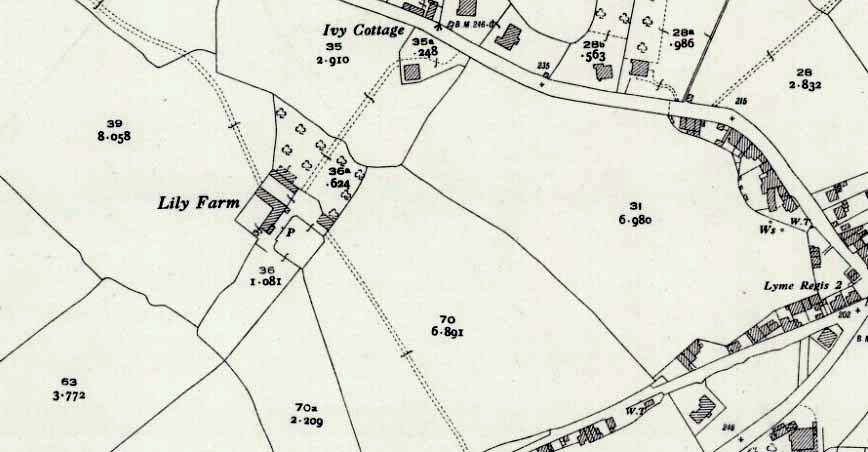 |
|||||||||||||||||||||||||||||||||||||||||||||||||||||||||||||||||||||||||||||||||||||
1926 Map |
|||||||||||||||||||||||||||||||||||||||||||||||||||||||||||||||||||||||||||||||||||||
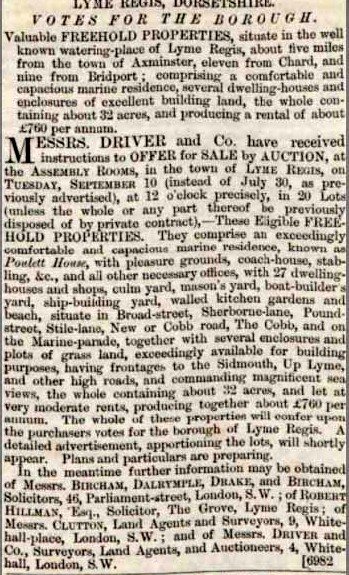 |
 |
||||||||||||||||||||||||||||||||||||||||||||||||||||||||||||||||||||||||||||||||||||
25th July 1867 |
|||||||||||||||||||||||||||||||||||||||||||||||||||||||||||||||||||||||||||||||||||||
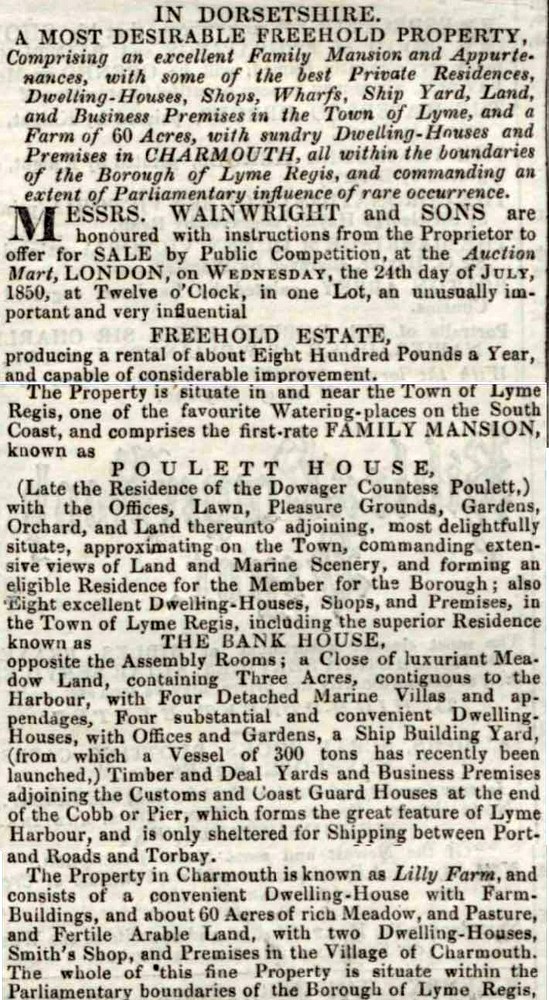 |
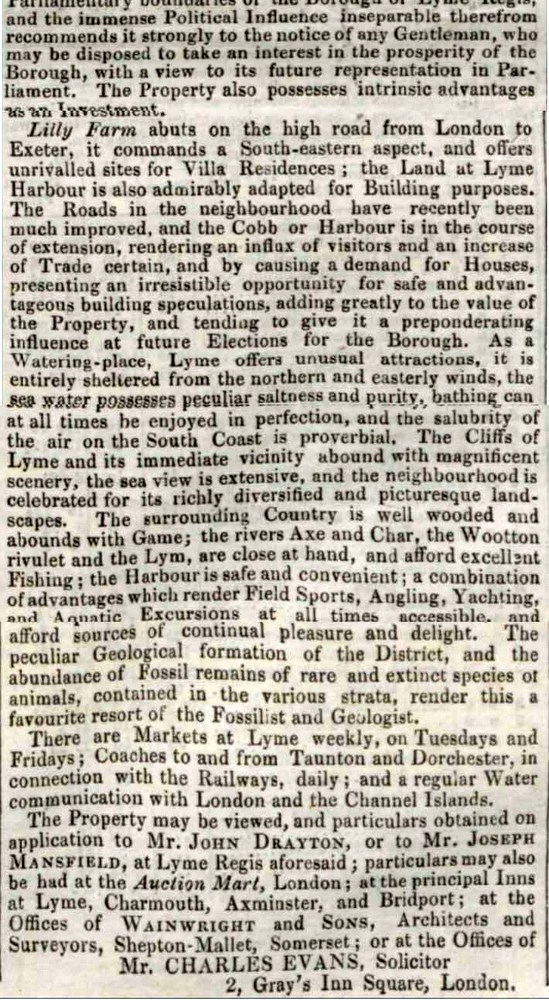 |
||||||||||||||||||||||||||||||||||||||||||||||||||||||||||||||||||||||||||||||||||||
13 July 1850 - Exeter and Plymouth Gazette |
|||||||||||||||||||||||||||||||||||||||||||||||||||||||||||||||||||||||||||||||||||||
| John Hodder on the right with his wife milking at Lilly Farm in Charmouth. The Chap on the left with the Milk buckets must be his brother judging from the likeness. | |||||||||||||||||||||||||||||||||||||||||||||||||||||||||||||||||||||||||||||||||||||
The same view of Lilly Farm showing more of the cattle. |
|||||||||||||||||||||||||||||||||||||||||||||||||||||||||||||||||||||||||||||||||||||
John Hodder is here riding one of the first grass cutting machines on Lilly Farm in Charmouth. |
|||||||||||||||||||||||||||||||||||||||||||||||||||||||||||||||||||||||||||||||||||||